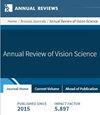深度学习:好的、坏的和丑的。
IF 5
2区 医学
Q1 NEUROSCIENCES
引用次数: 173
摘要
人工视觉经常被描述为在机器能够智能行动之前需要解决的关键挑战之一。机器学习的一个分支——深度学习的最新发展在机器视觉方面取得了令人印象深刻的进展——给人一种视觉问题即将得到解决的感觉。本综述的目的是提供最近深度学习发展的全面概述,并批判性地评估实现人类水平视觉智能的实际进展。我讨论了现代机器视觉算法对生物视觉的成功和局限性的影响,以及神经科学为未来人工视觉系统设计提供信息的前景。《视觉科学年度评论》第五卷的最终在线出版日期预计为2019年9月16日。修订后的估计数请参阅http://www.annualreviews.org/page/journal/pubdates。本文章由计算机程序翻译,如有差异,请以英文原文为准。
Deep Learning: The Good, the Bad, and the Ugly.
Artificial vision has often been described as one of the key remaining challenges to be solved before machines can act intelligently. Recent developments in a branch of machine learning known as deep learning have catalyzed impressive gains in machine vision-giving a sense that the problem of vision is getting closer to being solved. The goal of this review is to provide a comprehensive overview of recent deep learning developments and to critically assess actual progress toward achieving human-level visual intelligence. I discuss the implications of the successes and limitations of modern machine vision algorithms for biological vision and the prospect for neuroscience to inform the design of future artificial vision systems. Expected final online publication date for the Annual Review of Vision Science, Volume 5 is September 16, 2019. Please see http://www.annualreviews.org/page/journal/pubdates for revised estimates.
求助全文
通过发布文献求助,成功后即可免费获取论文全文。
去求助
来源期刊

Annual Review of Vision Science
Medicine-Ophthalmology
CiteScore
11.10
自引率
1.70%
发文量
19
期刊介绍:
The Annual Review of Vision Science reviews progress in the visual sciences, a cross-cutting set of disciplines which intersect psychology, neuroscience, computer science, cell biology and genetics, and clinical medicine. The journal covers a broad range of topics and techniques, including optics, retina, central visual processing, visual perception, eye movements, visual development, vision models, computer vision, and the mechanisms of visual disease, dysfunction, and sight restoration. The study of vision is central to progress in many areas of science, and this new journal will explore and expose the connections that link it to biology, behavior, computation, engineering, and medicine.
 求助内容:
求助内容: 应助结果提醒方式:
应助结果提醒方式:


